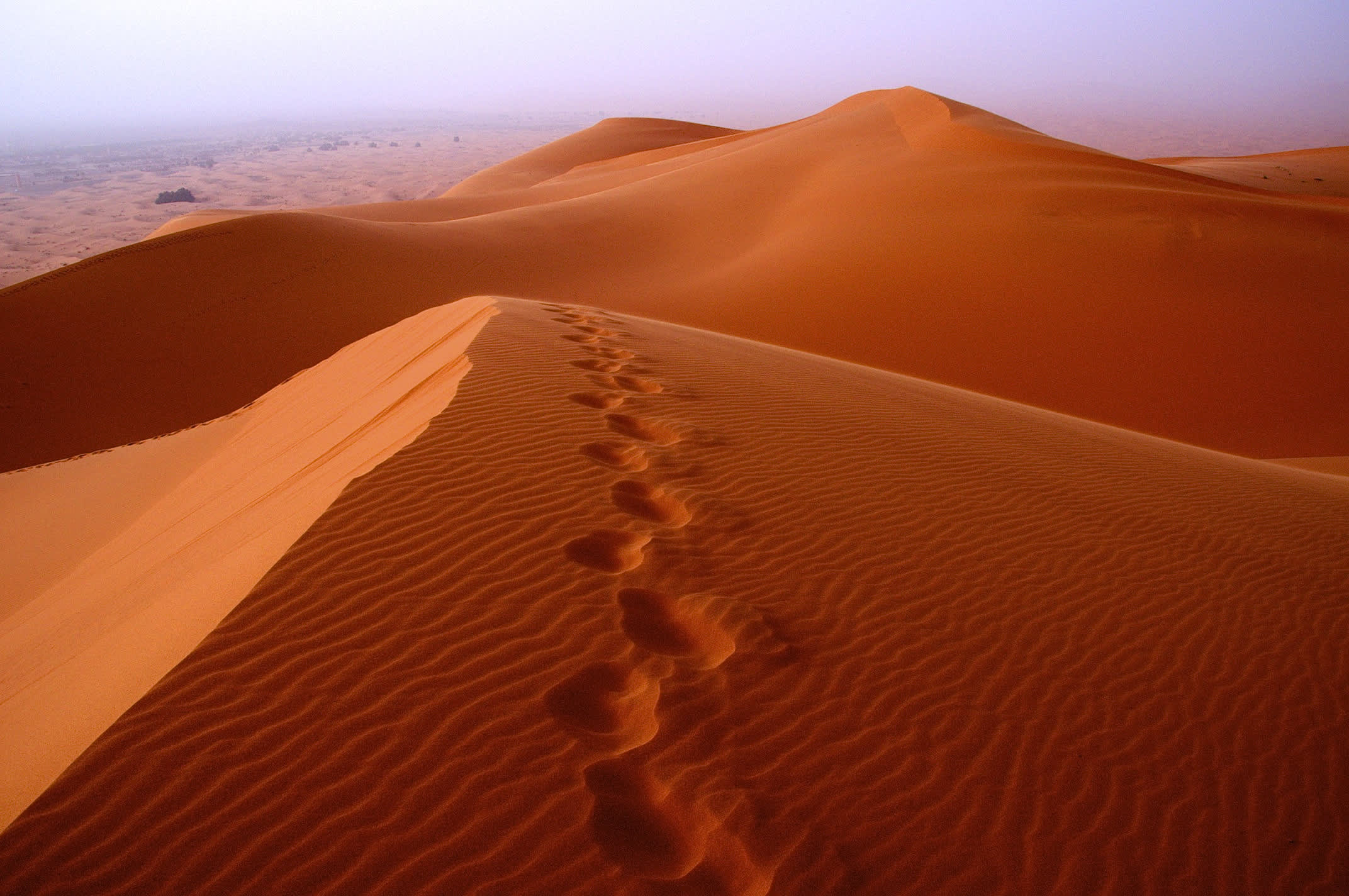At the Dead Sea, travelers slather thick, mineral-rich mud onto their bodies and bake under the sun. In India, hot stones are strategically placed along the spine. From Iceland to New Zealand, people luxuriate in steaming natural hot springs.
And in Morocco?
Travelers are buried alive in sweltering hot sand in the name of health and wellness.
The desert dunes of Morocco.
yavuz sariyildiz | Moment | Getty Images
The connection shared by these treatments is heat — and using the earth’s natural elements to heal the body and relax the mind.
A new wellness treatment? Not even close
Though largely unknown in the West, sand hammams — or sand baths — are anything but new.
“Sand hammams have existed for centuries,” said Jana Chaair, the marketing manager at Desert Luxury Camp in Merzouga, a small Moroccan village known for its proximity to the undulating sand dunes of Erg Chebbi.
The therapy is believed to have started in ancient Egypt and later practiced by the Greeks. Psammotherapy, or sand therapy, gets its name from the Greek word psámmos-, which means “sand.”
Desert camps in Morocco are offering sand hammams, or sand baths, to travelers.
Chantip Ditcharoen | Moment | Getty Images
Today, sand hammams are reaching wider audiences as desert camps introduce sand bathing to guests in search of wellness in the African desert.
What happens
A shallow hole is dug in the hot sand near the desert camp. Guests recline face-up in the hole and are covered up to the neck with sand.
Cocooned in the heat of the sand, the body starts to profusely sweat. This duration of the treatment is short — usually no more than 10 minutes. When a specified time expires — or guests can simply take no more — guests are helped from the sand and wrapped in a warm blanket.
Former nomadic tribesmen who settled in Merzouga are offering wellness tourism in the form of sand therapy.
STR | AFP | Getty Images
Guests can then move into another hole to start the process over again or retire to a nearby tent. In the tent, guests remain snugly wrapped in a blanket for around 45 minutes, during which time sweat and residual sand mix to form a mud-like coating on the skin. The treatment ends when the mud is showered off.
A tourist is served water as he takes a sand bath in the dunes of the Merzouga desert.
STR | AFP | Getty Images
Guests are monitored “the entire time” they are buried, said Chaair. Minders set up umbrellas on the sand to protect guests from the sun and help them sip water to avoid dehydration during the treatment. It’s the custom at Desert Luxury Camp to place less sand over the heart for “safety,” too.
Sand hammams are not advisable for anyone with blood pressure or heart-related medical problems, due to the intensity of the heat.
Why travelers are doing this
From back pain to stress relief, sand hammams are believed to have a number of wellness benefits.
Footprints in the dunes of Erg Chebbi.
Malcolm P Chapman | Moment | Getty Images
Sweating detoxifies the body, and the sand grains exfoliate dry skin. The weight of the sand helps to relax the muscles and quiet the mind. Due to the sand’s mineral composition, sand hammams are also used to combat skin conditions, such as acne, psoriasis and other medical ailments.
“It is good for people suffering from rheumatism, arthritis and sciatica,” says Chaair.
Modern-day torture or curative wellness treatment?
The answer depends on a traveler’s ability to tolerate temperature fluctuations.
It’s hot — uncomfortably so. And the sand is surprisingly heavy. Then to further shock the body system, a feeling of cold soon sets in.
During the summer months, sand can reach a scorching 65 degrees Celsius (149 degrees Fahrenheit).
GavinD | E+ | Getty Images
“You feel very, very hot!” Chaair emphasized, added that most guests at Desert Luxury Camp can only tolerate two to five minutes in the sand.
“But after a while your body starts to cool, and you sweat and start to feel very cold.”
When and where to try a sand hammam
Sand hammams depend upon the sun to heat the sand, thus the warm summer months from June to August are the best times to sand bathe in Morocco. During these months, sand temperatures can range from 40 to 65 degrees Celsius (104 to 149 degrees Fahrenheit), says Chaair.
Sand baths are popular on the southern Japanese island of Kyushu.
kyonntra | E+ | Getty Images
Desert Luxury Camp introduced sand hammams when it first opened in 2007, and several other camps around Merzouga offer the treatment too. Treatments are complimentary there, while other camps charge as much as 30 euros ($33) per sand bath.
The practice is also popular in parts of Egypt and in the resort towns of Ibusuki and Beppu on the southern Japanese island of Kyushu.
The Gharieni MLX Quartz bed at Mandarin Oriental, Kuala Lumpur uses warm alpha-quartz sand.
Courtesy of Mandarin Oriental Hotel Group
International luxury hotels are also getting in on the act, with several adding sand therapies to their spa menus, including the 60-minute desert sand scrub at the Qasr Al Sarab Desert Resort by Anantara. The Spa at Mandarin Oriental, Kuala Lumpur, also offers treatments on a hot sand therapy bed in a dedicated psammotherapy suite.
The verdict
Online reviews of Morocco sand baths are generally positive.
A reviewer of a sand bath in Japan reported feeling “entombed” and “slippery” (from the sweat) and summed up the experience as “delightfully odd.”
